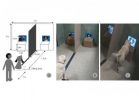(Press-News.org) A research team from Case Western Reserve University School of Medicine has discovered an approach that could make gene therapy dramatically more effective for patients.
Led by professor Eric Arts, PhD, the scientists discovered that the process of gene therapy is missing essential elements thereby reducing the effectiveness of this treatment. Re-introducing this element into their model system suggests that improvements for gene therapy areon the horizon.
The findings are detailed in the article, "A new genomic RNA packaging element in retroviruses and the interplay with ribosomal frameshifting," published today in the journal Cell Host & Microbe.
Advances in gene therapy offer promising treatment for genetic abnormalities, tumors and resistance to toxic chemotherapies. Such therapy has been used to treat cystic fibrosis, hemophilia, muscular dystrophy and sickle cell anemia.
But a failure to distribute enough modified genetic information to the patient's body has prohibited gene therapy from being more widely used.
Gene therapy relies mainly on viruses—which transport genomes inside the cells they infect—to deliver genetic material into a patient's cells. The virus-driven delivery tools are called "viral vectors."
Unfortunately, the success rate of viral vectors is uneven. For instance, adenoviruses, a cause for the common cold, and lentiviruses, such as HIV-1, are routinely converted into viral vectors. But adenovirus vectors don't last long, so therapy must be frequently re-administered. And lentiviral vectors, while stable, fail to deliver genetic material to enough defective human cells.
Arts, a professor of medicine in the Division of Infectious Diseases and HIV Medicine, learned that lentiviral carriers lack sufficient genetic material necessary for treatment.
HIV-1, when converted from virus to lentiviral vector, loses a specific RNA element required to pack its "container" with its own genetic material to be effective. After identifying the problem, researchers introduced the element into a lentiviral vector, successfully and significantly improving the quality and quantity of the gene therapy.
Arts and colleagues named the genetic element, Genomic RNA Packaging Enhancer element (or GRPE). During virus production, GRPE coordinates the production and filling of the container with the genetic material of HIV-1, or the desired human gene.
Delivery and success of gene therapy for human cells has the potential of increasing five to ten times with the introduction of the GRPE into the lentiviral vector.
"Using lentivirus for gene transfer appears to be a safe option," said Stanton L. Gerson, MD, director of the Case Comprehensive Cancer Center and the Asa and Patricia Shiverick- Jane Shiverick (Tripp) Professor of Hematological Oncology at Case Western Reserve School of Medicine and director of the Seidman Cancer Center at University Hospitals Case Medical Center, who is not involved in the study. "This discovery could greatly advance the recent successes ongoing in cancer and childhood congenital diseases. Improvements in the technology of gene delivery identified by Arts and his colleagues could lead to many more effective studies that help patients with many different diseases, including cancer. Its impact could be felt in a few short years."
Ultimately, introducing GRPE elements into viral vectors could enhance the ease and effectiveness of gene therapy, which typically uses transplanted human stem cells. Enhanced gene therapy and other improvements in targeted cell delivery might eliminate the need for stem cells and allow cells to be administered directly into patients.
###
About Case Western Reserve University School of Medicine
Founded in 1843, Case Western Reserve University School of Medicine is the largest medical research institution in Ohio and is among the nation's top medical schools for research funding from the National Institutes of Health. The School of Medicine is recognized throughout the international medical community for outstanding achievements in teaching. The School's innovative and pioneering Western Reserve2 curriculum interweaves four themes--research and scholarship, clinical mastery, leadership, and civic professionalism--to prepare students for the practice of evidence-based medicine in the rapidly changing health care environment of the 21st century. Nine Nobel Laureates have been affiliated with the School of Medicine.
Annually, the School of Medicine trains more than 800 MD and MD/PhD students and ranks in the top 25 among U.S. research-oriented medical schools as designated by U.S. News & World Report's "Guide to Graduate Education."
The School of Medicine's primary affiliate is University Hospitals Case Medical Center and is additionally affiliated with MetroHealth Medical Center, the Louis Stokes Cleveland Department of Veterans Affairs Medical Center, and the Cleveland Clinic, with which it established the Cleveland Clinic Lerner College of Medicine of Case Western Reserve University in 2002. http://casemed.case.edu
Discovery in HIV may solve efficiency problems for gene therapy
Case Western Reserve researchers pinpoint RNA element missing from viral vectors
2013-02-14
ELSE PRESS RELEASES FROM THIS DATE:
Study tracks leukemia's genetic evolution, may help predict disease course, tailor care
2013-02-14
BOSTON AND CAMBRIDGE, Mass.––Tumors are not factories for the mass production of identical cancer cells, but are, in reality, patchworks of cells with different patterns of gene mutations. In a new study, researchers at Dana-Farber Cancer Institute and the Broad Institute show, more fully than ever before, how these mutations shift and evolve over time in chronic lymphocytic leukemia (CLL) – providing a strobe-like look at the genetic past, present, and future of CLL tumors.
Their report, which will be published online today by the journal Cell, suggests that evolution ...
Gene invaders are stymied by a cell's genome defense
2013-02-14
Gene wars rage inside our cells, with invading DNA regularly threatening to subvert our human blueprint. Now, building on Nobel-Prize-winning findings, UC San Francisco researchers have discovered a molecular machine that helps protect a cell's genes against these DNA interlopers.
The machine, named SCANR, recognizes and targets foreign DNA. The UCSF team identified it in yeast, but given the similarity of yeast and human cells, comparable mechanisms might also be found in humans, where they might serve to lower the burden of inherited human disease and death, the researchers ...
Environment schemes for kids influence parents' behavior
2013-02-14
Teaching children about the environment can affect the knowledge and behaviour of their parents, according to new research.
Scientists from Imperial College London surveyed the families of 160 schoolchildren in the Seychelles, some of whom took part in educational activities about the island's valuable wetland resources.
They found that the parents of children who took part in the wetland activities were more knowledgeable about wetlands and, were more inclined to undertake 'environmentally friendly' behaviours such as conserving water in their homes.
The findings ...
Our primitive reflexes may be more sophisticated than they appear, study shows
2013-02-14
Supposedly 'primitive' reflexes may involve more sophisticated brain function than previously thought, according to researchers at Imperial College London.
The Vestibular-Ocular Reflex (or VOR), common to most vertebrates, is what allows us to keep our eyes focused on a fixed point even while our heads are moving. Up until now, scientists had assumed this reflex was controlled by the lower brainstem, which regulates eating, sleeping and other low-level tasks.
Researchers at Imperial's Division of Brain Sciences conducted tests to examine this reflex in left- and right-handed ...
Indian plant could play key role in death of cancer cells
2013-02-14
AUGUSTA, Ga. – Scientists at the Georgia Regents University Cancer Center have identified an Indian plant, used for centuries to treat inflammation, fever and malaria, that could help kill cancer cells.
Cancer cells typically avoid death by hijacking molecular chaperones that guide and protect the proteins that ensure normal cellular function and then tricking them into helping mutated versions of those proteins stay alive, says Dr. Ahmed Chadli, a researcher in the Molecular Chaperone Program at the GRU Cancer Center and senior author of the study named the Journal ...
New LA BioMed research identifies effective treatment for common gynecological problem
2013-02-14
LOS ANGELES (Feb. 14, 2013) – New research from the Los Angeles Biomedical Research Institute (LA BioMed) found a progestogen-only treatment halted bleeding in women suffering from extremely heavy periods, according to the study published online by the American Journal of Obstetrics and Gynecology.
"Excessive uterine bleeding is a common problem we see in gynecological practices and emergency rooms. It can interfere with women's daily activities and put them at risk for anemia and other more serious health consequences caused by blood loss," said Anita L. Nelson, MD, ...
Love of musical harmony is not nature but nurture
2013-02-14
Our love of music and appreciation of musical harmony is learnt and not based on natural ability – a new study by University of Melbourne researchers has found.
Associate Professor Neil McLachlan from the Melbourne School of Psychological Sciences said previous theories about how we appreciate music were based on the physical properties of sound, the ear itself and an innate ability to hear harmony.
"Our study shows that musical harmony can be learnt and it is a matter of training the brain to hear the sounds," Associate Professor McLachlan said.
"So if you thought ...
Dogs spot the dog
2013-02-14
Dogs pick out faces of other dogs, irrespective of breeds, among human and other domestic and wild animal faces and can group them into a category of their own. They do that using visual cues alone, according to new research by Dr. Dominique Autier-Dérian from the LEEC and National Veterinary School in Lyon in France and colleagues. Their work, the first to test dogs' ability to discriminate between species and form a "dog" category in spite of the huge variability within the dog species, is published online in Springer's journal Animal Cognition.
Individuals from the ...
Combining quantum information communication and storage
2013-02-14
Aalto University researchers in Finland have successfully connected a superconducting quantum bit, or qubit, with a micrometer-sized drum head. Thus they transferred information from the qubit to the resonator and back again.
- This work represents the first step towards creating exotic mechanical quantum states. For example, the transfer makes it possible to create a state in which the resonator simultaneously vibrates and doesn't vibrate, says professor Mika Sillanpää from Aalto University, who runs the research group.
A qubit is the quantum-mechanical equivalent ...
Gut microbes could determine the severity of melamine-induced kidney disease
2013-02-14
Microbes present in the gut can affect the severity of kidney disease brought on by melamine poisoning, according to an international study led by Professor Wei Jia at the University of North Carolina in collaboration with the research group of Professor Jeremy Nicholson at Imperial College London.
In 2008, nearly 300,000 Chinese children were hospitalised with kidney disease brought on by supplies of powdered milk deliberately contaminated with melamine to boost the apparent protein content. Although melamine was known to combine with uric acid in the children's bodies ...
LAST 30 PRESS RELEASES:
B cells transiently unlock their plasticity, risking lymphoma development
Advanced AI dodel predicts spoken language outcomes in deaf children after cochlear implants
Multimodal imaging-based cerebral blood flow prediction model development in simulated microgravity
Accelerated streaming subgraph matching framework is faster, more robust, and scalable
Gestational diabetes rose every year in the US since 2016
OHSU researchers find breast cancer drug boosts leukemia treatment
Fear and medical misinformation regarding risk of progression or recurrence among patients with breast cancer
Glucagonlike peptide-1 receptor agonists and asthma risk in adolescents with obesity
Reviving dormant immunity: Millimeter waves reprogram the immunosuppressive microenvironment to potentiate immunotherapy without obvious side effects
Safety decision-making for autonomous vehicles integrating passenger physiological states by fNIRS
Fires could emit more air pollution than previously estimated
A new way to map how cells choose their fate
Numbers in our sights affect how we perceive space
SIMJ announces global collaborative book project in commemoration of its 75th anniversary
Air pollution exposure and birth weight
Obstructive sleep apnea risk and mental health conditions among older adults
How talking slows eye movements behind the wheel
The Ceramic Society of Japan’s Oxoate Ceramics Research Association launches new international book project
Heart-brain connection: international study reveals the role of the vagus nerve in keeping the heart young
Researchers identify Rb1 as a predictive biomarker for a new therapeutic strategy in some breast cancers
Survey reveals ethical gaps slowing AI adoption in pediatric surgery
Stimulant ADHD medications work differently than thought
AI overestimates how smart people are, according to HSE economists
HSE researchers create genome-wide map of quadruplexes
Scientists boost cell "powerhouses" to burn more calories
Automatic label checking: The missing step in making reliable medical AI
Low daily alcohol intake linked to 50% heightened mouth cancer risk in India
American Meteorological Society announces Rick Spinrad as 2026 President-Elect
Biomass-based carbon capture spotlighted in newly released global climate webinar recording
Illuminating invisible nano pollutants: advanced bioimaging tracks the full journey of emerging nanoscale contaminants in living systems
[Press-News.org] Discovery in HIV may solve efficiency problems for gene therapyCase Western Reserve researchers pinpoint RNA element missing from viral vectors





